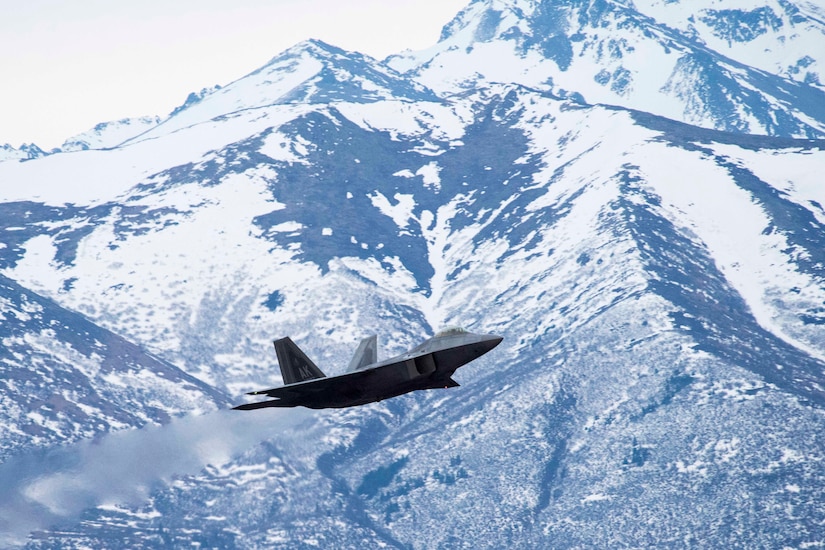April 21, 2020 | BY C. Todd Lopez , DOD News
The ongoing war against the coronavirus hasn't kept U.S.
Northern Command or North American Aerospace Defense Command from defending
North America against meddling Russian aircraft or North Korean missile
launches, the commands' top officer said.
"Despite the COVID-19 pandemic, U.S. Northern Command
and the North American Aerospace Defense Command, as well as our components and
regions, are conducting our no-fail mission of defending our homeland,"
Air Force Gen. Terrence J. O'Shaughnessy, who commands both organizations, said
during a telephone news conference today.
Earlier this month, he said, NORAD forces intercepted two
Russian IL-38 aircraft near Alaska. "This is the third time in two months
we've intercepted Russian military aircraft in our [air defense identification
zone]," the general said.
NORAD continues to track and remains ready to respond to
North Korean missile activity as well, O'Shaughnessy said. North Korea launched
a short-range missile March 29, which was identified by the Japanese coast
guard. North Korea also had launched three missiles March 9, and two additional
missiles March 21.
Both the Russian aircraft and the North Korean missile
launches are considered typical activity, rather than an effort to take
advantage of any ill-conceived perception the
U.S. military capability might be diminished due to COVID-19,
O'Shaughnessy said. Rather, the general said, he believes Russian activity is
part of an ongoing effort to probe and check the U.S. ability to respond.
"We just wanted to make it very clear to them — which
we did by the way we intercepted them — that there are no vulnerabilities as a
result of COVID-19," the general said. "We are postured to maintain
that ability to respond at a moment's notice and have no degradation in our
ability to defend the homeland."
The same is true of North Korea, he said. "We have seen
continuous activity," he told reporters. "It's not necessarily
outside of the realm of historical norms, especially given some of the significant
dates that have gone by. And so, as always, we're ready to defend the homeland
with the ballistic missile capability, defense capability, to be able to
respond."
Russian aircraft and North Korean missiles aren't the sole
focus, O'Shaughnessy noted.
"As our commander in chief and secretary of defense
have stated, we are at war with COVID-19," he said. "To win this war,
which we will, we have approached it as we would any large-scale military
campaign, and we're laser-focused, and will remain agile in adjusting our
approach to match the circumstances on the ground."
Almost 15,000 active-duty personnel are deployed in response
to COVID-19, including nearly 4,500 medical personnel. "As we've expanded
our operations to more than a dozen states, we've implemented an adaptive
medical concept of operation," O'Shaughnessy said.
Based on lessons learned during operations in New York City,
Northcom has developed three medical force employment options that
O'Shaughnessy said are "dynamically scalable and tailorable."
The first, he said, involves embedding Defense Department
medical providers directly into civilian hospitals or treatment facilities.
The second involves the department adding modular capability
to existing civilian facilities by working within a portion of an existing
facility, such as in a wing of a hospital. Third, he said, are DOD-run
alternate care facilities, such as at the Javits Center in New York City.
Since the start of the coronavirus pandemic, he said, the
DOD has changed its operations to align with the needs of local communities.
Initially, he said, the DOD officials believed the
department could best serve the nation by acting as a "relief valve"
for non-COVID patients, expecting that hospitals would be full and that it
could best contribute by taking on the care of non-COVID-19 patients so local
hospitals could focus on those affected by the coronavirus. But as the
situation unfolded, he said, that changed.
"It wasn't just the capacity of hospitals, it was literally
our health care workers and the staffing of them," he said. The amount of
work needed to treat patients, both COVID-19 patients and others, was
exhausting civilian health care workers, O'Shaughnessy said, and that's where
DOD really stepped up.
"Really, in a matter of days ... of understanding that
our plan that was in place was not going to be the most effective, we were able
to change," he said.
Those changes included opening up both the Navy hospital
ship USNS Comfort and the Javits Center to treating COVID patients, as well as
putting DOD medical personnel into local hospitals to better support civilian
medical personnel.
"Whether defending our homeland or providing
much-needed military capability and capacity to win this war against the
invisible enemy, know that our commands are responding now and are prepared to
respond where they're needed in the future across all 50 states — part of a
unified whole-of-America effort, orchestrated by [the Federal Emergency
Management Agency, the Department of Health and Human Services] and the
National Response Coordination Center," O'Shaughnessy said. "This is
truly a unified response, and U.S. Northern Command is honored to be part of
the team."








No comments:
Post a Comment